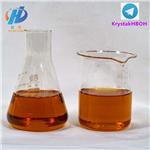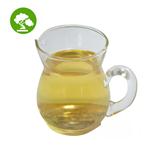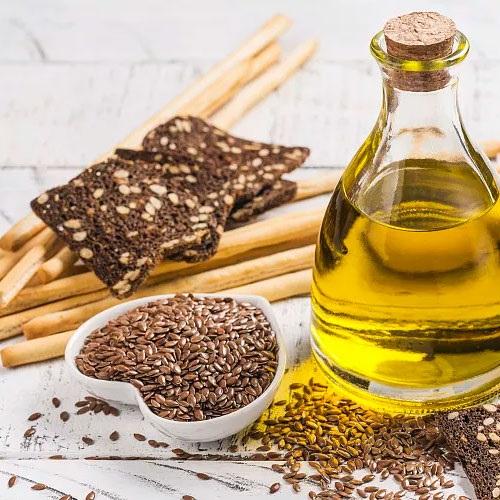- LINSEED OIL
-

- $1.00 / 1KG
-
2024-04-23
- CAS:8001-26-1
- Min. Order: 1KG
- Purity: 99.91%
- Supply Ability: 200000
- Linseed oil
-

- $0.00 / 1KG
-
2024-04-23
- CAS:8001-26-1
- Min. Order: 1KG
- Purity: 99% HPLC
- Supply Ability: 1000KG
- Linseed oil
-

- $0.00 / 1KG
-
2024-04-12
- CAS:
- Min. Order: 1KG
- Purity: 99%
- Supply Ability: 10000KG/month
|
| | Linseed oil Basic information |
| | Linseed oil Chemical Properties |
| Melting point | -24.0℃ | | Boiling point | >316 °C | | density | 0.93 g/mL at 25 °C(lit.) | | refractive index | n20/D 1.4795(lit.) | | Fp | >230 °F | | storage temp. | room temp | | Odor | bland | | Dielectric constant | 3.2-3.5(0.0℃) | | Stability: | Stable, but polymerizes gradually upon exposure to air. Combustible. Incompatible with strong oxidizing agents. Reacts violently with chlorine. Material such as rags impregnated with linseed oil may spontaneously combust after a long induction period due to gradual exothermic reaction with oxygen. | | EPA Substance Registry System | Linseed oil (8001-26-1) |
| | Linseed oil Usage And Synthesis |
| Chemical Properties | Also known as flaxseed oil, linseed oil is golden yellow, amber, or brown drying oil with a peculiar odor and bland taste. Iodine value 177, saponification value 189-195, acid number(max.) 4 (ASTMD 234-48), polymerizes on exposure to air. Soluble in ether, chloroform, carbon disulfide, and turpentine; slightly soluble in alcohol, spontaneous heating. Combustible. Chief constituents are glycerides of linolenic, oleic, linoleic, and saturated fatty acids. The drying property is due to the linoleic and linolenic groups. Derivation is from seeds of the flax plant Linum usitatissimum by expression or solvent extraction. Various refining and bleaching methods are used. The grades of linseed oil are raw; boiled, double-boiled, blown, varnish makers' and refilled.

Linseed oil is currently one of the highest known vegetable oils with the highest content of essential fatty acids (omega-3 and omega-6 fatty acids). Used in paints, varnishes, oilcloth, putty, printing inks, core oils, linings, and packings, alkyd resins, soap, and pharmaceuticals. | | Uses | The botanical properties of linseed oil are listed as emollient, antiinflammatory, and healing. Derived from the flax plant seed, the oil is obtained by expression with little or no heat. Linseed oil is a drying oil, meaning it can oxidise into a solid form. Due to this property, linseed oil is used on its own or blended with other oils, resins, and solvents as an impregnator and varnish in wood finishing, as a pigment binder in oil paints, as a plasticizer and hardener in putty, and in the manufacture of linoleum. Linseed oil is still widely used for the finishing and refinishing of furniture and timber products. | | Definition | Linseed oil is an pale yellow oil extracted from the seeds of flax (linseed). It hardens on exposure to air (it is a drying oil) because it contains linoleic acid and linolenic acid, and is used in enamels, oilpaints, putty, linoleum and varnishes. | | General Description | Light yellow to dark yellow oily liquid. Insoluble in water and less dense than water. Hence floats on water. Contains principally glycerides of linolenic, linoleic, oleic and palmitic acid. | | Air & Water Reactions | Insoluble in water. | | Reactivity Profile | LINSEED OIL react with acids to liberate heat. Heat is also generated by interaction with caustic solutions. Strong oxidizing acids may cause a vigorous reaction that is sufficiently exothermic to ignite the reaction products. Flammable hydrogen is generated by mixing with alkali metals and hydrides. React with oxygen in the air to harden. Can react with air fast enough to cause ignition of near-by combustible material if the heat builds up in an unventilated space (called "spontaneous combustion" in oily rags). | | Health Hazard | Contact of liquid with eyes causes mild irritation. Prolonged contact with skin can cause dermatitis. Ingestion of large doses (over 1 oz) has laxative effect. | | Fire Hazard | Linseed oil is flammable. If used and stored correctly, there is very little risk of linseed oil spontaneously combusting. However, the fire hazard increases under certain circumstances. Be very careful with rags that have been used to apply linseed oil. In many cases of spontaneous combustion of drying oils the cause has been a pile of oil soaked rags. As the oil oxidizes it generates heat. The rags act as an insulator, allowing the heat to build up until the cloth smokes and eventually ignites. The bigger the pile, the greater the possible heat and the greater the risk. Used rags should be stored in a metal can with a top and soaked with water to limit the risk of fire since the drying process is exothermic. | | Safety | Linseed oil is non-toxic and completely food-safe. It is often given as a health supplement in both people and animals, including dogs, horses, and more. |
| | Linseed oil Preparation Products And Raw materials |
|